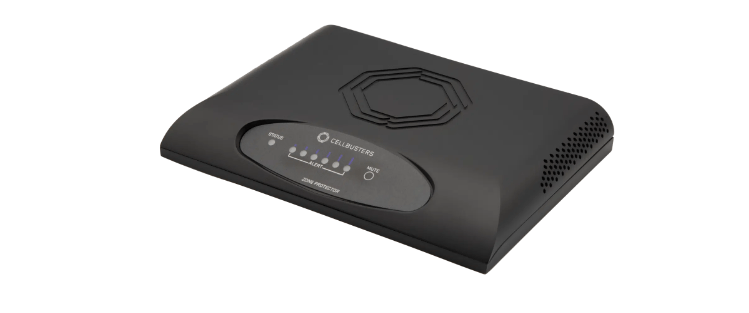Cell Phone Detection: How it Works and Why it’s Important for Your Facility

Ensuring the safety and security of facilities and businesses can be a challenging task, especially when it comes to preventing cell phones from being brought into the building. With nearly everyone owning a mobile device, it has become easy to conceal them and bypass conventional security measures. It is even possible to dismantle a phone, smuggle it into a building, and reassemble it later.
To tackle this issue, cell phone detection devices have been developed. These devices are designed to detect the presence of mobile devices and alert security personnel. They work by detecting the radio frequencies emitted by mobile devices and can identify them even if they are in standby mode or have their wireless network turned off. Cell phone detection devices can be used in various environments, including secure government buildings, prisons, schools, and businesses that handle sensitive information.
Understanding Cell Phone Detection Devices

Cell phone detection devices are capable of detecting mobile devices within a given range. Depending on the device, it can detect phones that are turned on, as well as those that are turned off or in airplane mode. They are also able to detect other mobile activities, such as calling, texting, or video transmission.
Using cell phone detection devices is particularly beneficial in areas where information security is critical, or where disruption caused by cell phones is a concern. Prisons, for instance, can benefit greatly from using these devices to prevent the entry of contraband. Setting up and using cell phone detection devices is simple and can cover a large range of areas, making it an effective solution for various types of facilities and businesses.
Cell phone detectors are widely used in facilities that need extra security or less distraction, such as:
Detention facilities and/or prisons
Government buildings
Airports
Schools and classrooms
Offices
Movie theaters and other retail locations
Call centers
How Does Cell Phone Detection Work
Cell phone detectors have two methods for detecting cell phone signals. The first one is through picking up signals transmitted between the cell phone and its adjacent tower. The second is by detecting the ferromagnetic components that are found in all mobile devices.
Once a cell phone detector finds a signal, depending on the device, it will alert the user of the new phone often through a beep or alert message. While each method detects both smartphones and feature phones, they have different ranges and are better suited for different scenarios.
Types of Cell Phone Detection Devices

Ferromagnetic cell phone detection
Ferromagnetic cell phone detectors use the ferromagnetic components that are found in all cell phones and do not rely on any radio waves. They are best for finding devices that are shut off, in airplane mode, hidden within other electronics, or underneath clothing and bags, which is common for smuggling cell phones into secure areas.
Although ferromagnetic cell phone detectors are excellent for finding any mobile device, they have a very short range of only 1-2 feet and are better suited for direct inspection of an individual or smaller area, such as a screening facility going through an airport or prison, instead of overall cell phone detection for an entire building.
Radio frequency cell phone detection
Radio frequency cell phone detection devices rely on the communication between a cell phone and its tower. These RF detectors are small and easy to conceal. They can pick up a mobile device almost immediately once a cell phone transmits to the tower.
Unlike ferromagnetic cell phone detectors, RF detectors have a long range and can cover areas up to a mile away, making them an ideal solution for scanning hundreds of people at once, instead of individually. The typical range of a cell RF detector is between 5-150 ft of detection coverage.
If a cell phone is turned off or in airplane mode, however, the cell phone will not be transmitting to the tower, which means that the cell phone detector will not be able to find the device. They can also not detect any concealed cell phone parts that a ferromagnetic cell phone detector would as the phone has to be whole to be able to find the signal.
Comparing Types of Cell Phone Detection
No one type of cell phone detection is better than another; both ferromagnetic detection and RF detection are excellent at finding cell phones and mobile devices. Often, the best solution is to combine both methods of detection to protect your building.
Which one works best for your facility will depend on a few factors including the range it needs to detect, what it will be looking for, and the type of facility it is being used in.
For example, prisons would use a combination of ferromagnetic and RF to keep out contraband cell phones and detect the usage of any new ones. Ferromagnetic detectors used in screenings will prevent cell phone parts from being smuggled into the prison, while an RF detector can scan the whole facility for any activity.
Cell Phone Detection vs. Cell Phone Jammers: What’s the Difference?
While it may be tempting to use a cell phone jammer in place of a cell phone detector, they are illegal to use in the United States. Afterall, they do block all cell phone signals, including any emergency calls that may be needed and pose a safety risk.
Instead, a cell phone detection device allows cell phone signals through, but you are able to monitor and analyze them. If there is an unknown signal, you have the ability to track it down and prevent it from any nefarious activities, or confirm that it is a device that can be used. They are also designed to find cell phones that aren’t in use which can stop the transfer of devices within a building.
Cellbuster’s Zone Protector™: How it Detects Cell Phones
Whether you’re running a retail store or a government SCIF, it’s important to protect your facility from unwanted mobile devices. Using Cellbuster’s Zone Protector™ can help you achieve this goal. The device utilizes RF technology to detect cell phones from all countries, including those in standby mode, as well as texts, data, and calls.
Once the Zone Protector™ detects a device, it notifies the user through an audio alert, visual LED alert, or silent mode. The device can be adjusted to cover a wide range of areas, from a small secure room to a larger facility in need of cell phone detection. By using a cell phone detection device like the Zone Protector™, you can rest assured that your building and information are kept safe from unauthorized mobile devices.








